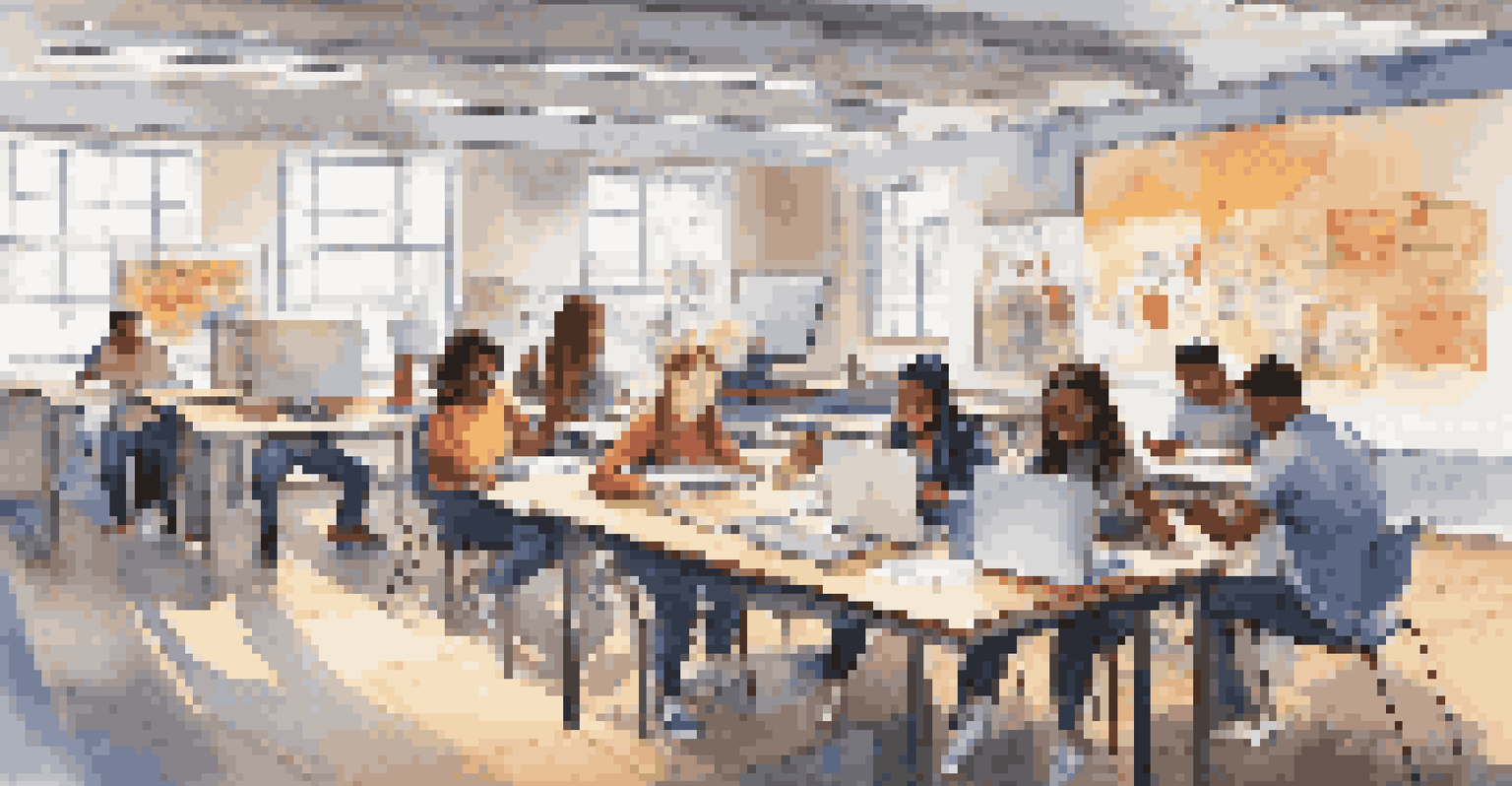Personalization Engines in Education: Tailoring Learning Paths

Understanding Personalization Engines in Education
Personalization engines in education are tools designed to tailor learning experiences to individual needs. They analyze various data points, such as students' learning styles, strengths, and weaknesses, to create customized learning paths. This tailored approach not only enhances engagement but also helps learners progress at their own pace.
Personalization is not a trend, it’s a strategy that can change the way we think about education.
Imagine a student struggling with math concepts while excelling in reading. A personalization engine can adjust the curriculum, offering additional math resources and challenges while maintaining the reading level. This creates a balanced learning environment where each student feels supported and challenged appropriately.
As technology advances, these engines are becoming increasingly sophisticated. They utilize artificial intelligence to predict the best learning strategies for each student, making education more effective and enjoyable. By leveraging data, educators can foster a more inclusive classroom where every learner thrives.
The Benefits of Tailoring Learning Paths
Tailoring learning paths through personalization engines offers numerous benefits for both students and educators. For students, personalized learning can lead to improved motivation and satisfaction, as they engage with material that resonates with their interests and abilities. This can reduce frustration and increase confidence, ultimately leading to better academic performance.

Educators also reap the rewards of personalized learning. With a clearer understanding of each student's needs, teachers can allocate resources more effectively and focus their efforts where they are needed most. This targeted approach allows for a more efficient use of time and energy, maximizing educational outcomes.
Moreover, personalized learning fosters a sense of ownership among students. When learners have a say in their educational journey, they are more likely to take responsibility for their progress. This empowerment can lead to lifelong learning habits that extend beyond the classroom.
Implementing Personalization Engines in the Classroom
Integrating personalization engines into the classroom requires careful planning and execution. First, educators must choose the right technology that aligns with their teaching goals and the needs of their students. Various platforms offer different features, so it's essential to evaluate each option thoroughly.
The goal of education is not to fill a bucket, but to light a fire.
Once a personalization engine is selected, training for both educators and students becomes crucial. Teachers need to understand how to interpret data and adjust their teaching strategies accordingly, while students should be taught how to navigate their personalized learning paths effectively. This collaborative effort ensures everyone is on board with the changes.
Ongoing assessment is vital to the success of personalization engines. Regular feedback from students and educators can help refine the learning paths and technology usage. By continuously evaluating the approach, schools can adapt to the evolving needs of their students and enhance the overall educational experience.
Challenges of Personalization in Education
Despite the many advantages, implementing personalization engines in education does come with challenges. One significant hurdle is the potential for data privacy concerns. Schools must ensure that student information is protected and used responsibly, which requires clear policies and transparent communication with parents and guardians.
Another challenge lies in the varying levels of technology access among students. Not every learner may have the same resources at home, which can create disparities in their personalized learning experiences. Educators must consider these differences and strive to provide equitable access to technology and learning materials.
Additionally, resistance to change can be a barrier. Some educators may feel overwhelmed by the integration of new technologies or doubt their effectiveness. To overcome this, schools should foster a culture of innovation and support teachers throughout the transition, highlighting success stories to encourage broader acceptance.
The Role of Data in Personalization Engines
Data is at the heart of personalization engines, driving the customization of learning experiences. By collecting information on student performance, preferences, and engagement levels, these engines can identify patterns that inform instructional strategies. This data-driven approach allows educators to make informed decisions tailored to individual students.
For example, if a student consistently performs well in quizzes but struggles with assignments, the personalization engine may suggest more interactive assignments or additional resources to enhance understanding. This targeted intervention can significantly improve the learning experience by addressing specific areas of difficulty.
However, it's essential to balance data collection with ethical considerations. Schools must ensure they use data responsibly and transparently, prioritizing student privacy. By fostering a culture of trust, educators can create an environment where data is seen as a tool for empowerment rather than surveillance.
Future Trends in Personalized Learning
As technology continues to evolve, the future of personalized learning looks promising. Emerging trends suggest that artificial intelligence will play an even more significant role in shaping personalized education. AI can analyze vast amounts of data and adapt learning experiences in real-time, making education more responsive to student needs.
Furthermore, the integration of gamification is likely to enhance personalized learning experiences. By incorporating game elements into educational platforms, students can enjoy a more engaging and interactive learning journey. This approach can motivate learners to achieve their goals while making the process fun and enjoyable.
Additionally, the collaboration between educational institutions and tech companies will likely increase. Partnerships can lead to innovative solutions that address the unique challenges of personalized learning. As these trends unfold, the educational landscape will continue to transform, offering students more tailored and effective learning experiences.
Real-World Examples of Successful Personalization
Many schools and institutions are already reaping the benefits of personalization engines in education. For instance, several online platforms use adaptive learning technologies that dynamically adjust content based on student performance. This method has proven effective in helping learners master concepts before moving on to more advanced material.
Another example can be seen in blended learning environments, where traditional classroom instruction is combined with online resources. Educators can use data from personalization engines to create tailored assignments and group projects that cater to diverse learning styles. This approach not only enhances engagement but also promotes collaboration among students.

These success stories highlight the potential of personalization in education. By emphasizing individual strengths and addressing weaknesses, schools can foster a more inclusive and productive learning environment. As more institutions adopt these strategies, the future of education promises to be more personalized and effective than ever.